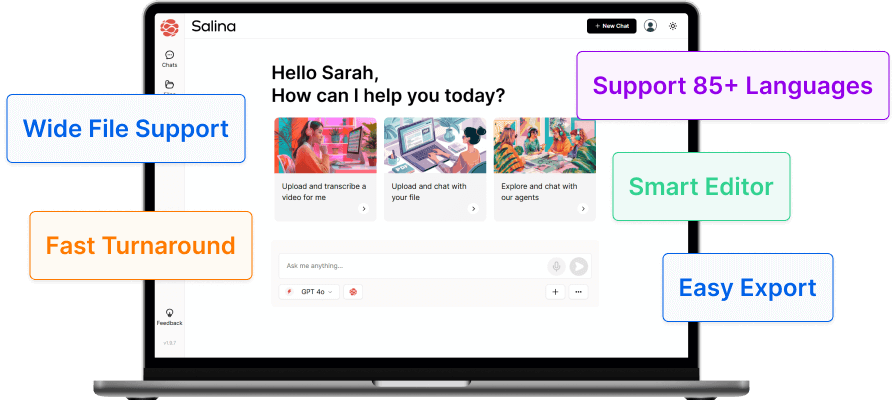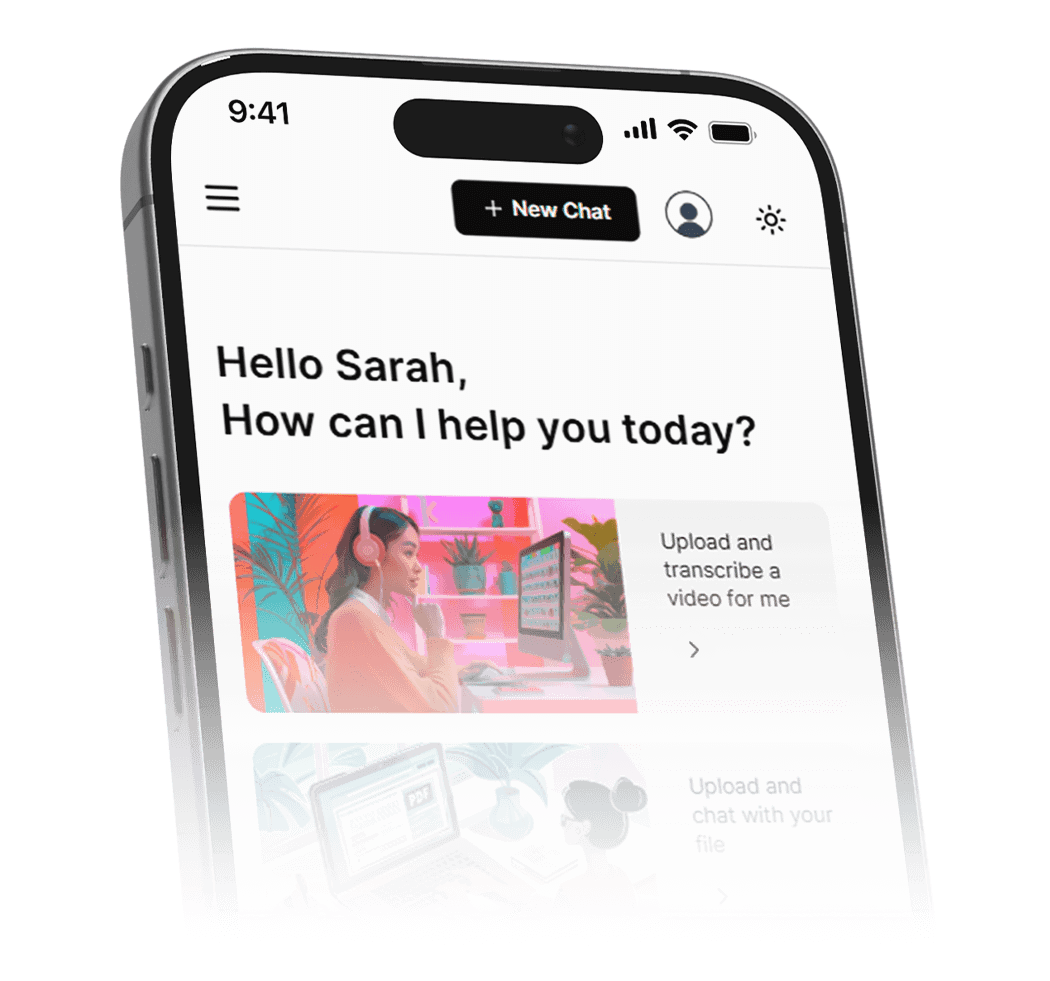Your best content deserves a second chance at success. Learn five essential tips and best practices for repurposing content to get the most mileage out of your top-performing assets.
The other day, there was a big mid-year sale at the mall, so I thought it would be the perfect time to update my wardrobe with some new clothes. After trying everything on at home, I realized I had accidentally put together an outfit that would be perfect for a beach wedding. But then it hit me – when would I ever actually go to a beach wedding? I had created this great look, but no real occasion to wear it.
It made me think about how this happens sometimes with the work we create, especially at our jobs. We pour our hearts into making something really stellar, but after the initial launch, it kind of fades into obscurity. The good news is, these days, there are ways to breathe new life into that old content by giving it a fresh spin and introducing it to new audiences. That’s where the art of repurposing comes into play.
Just like I might get inspired to style those new beach wedding clothes differently by pairing them with different accessories or wearing them in a totally new way, you can repurpose your existing content assets into different formats tailored for various platforms and audiences. Imagine turning an old blog post into an infographic, or combining a series of posts into an ebook – the possibilities are endless! Repurposing allows you to extend the lifespan of your content and reach new people while still providing value in fresh, engaging ways.
The Power of Repurposing Content in Your Marketing Strategy
Repurposing content is more than a trend; it’s a key part of an effective content marketing strategy. By reusing and adapting content across different formats and platforms, you can significantly extend its lifespan and reach.
Reaching New Audiences in Their Native Habitat
Different people prefer to consume content in various forms—some love reading blogs, while others prefer watching videos or listening to podcasts. Repurposing allows you to meet your audience where they are, increasing engagement and expanding your reach.
This is particularly important given the growing popularity of diverse content formats. A HubSpot report indicates that 82% of marketers plan to continue or increase their investment in podcasts and other audio content. This highlights the importance of adapting your message to different mediums.
Adapting Your Message to Multiple Formats
Repurposing content enables you to tailor your message for different platforms, ensuring it resonates with diverse audiences. Whether it’s a blog post transformed into a video or an infographic, each format offers unique opportunities to connect with your audience.
This approach is particularly effective today, where short-form video content reigns supreme. According to Sprout Social, 66% of consumers say short-form video is the most engaging type of social media content. This underscores the importance of adapting your message to this popular format.
Keeping Your Content Fresh and Relevant
As content creation tools and platforms change, standing out requires high-quality, authoritative content. Repurposing helps you get the most out of your best content assets, ensuring they remain relevant and impactful over time.
This strategy aligns with the current trends in content marketing. Wyzowl’s annual report shows that 91% of businesses are using video as a marketing tool in 2023—an all-time high, with expectations for this trend to continue well into 2024. By repurposing your content into video format, you’re not only staying current but also ensuring your content strategy stays effective for the foreseeable future.
Now that we’ve gone over the importance and potential of repurposing content, let’s explore some actionable tips. These will help you effectively transform and maximize the use of your existing content assets.
These strategies will help you make the most of repurposing, ensuring that your content reaches its full potential across various platforms and formats.
5 Must-Know Tips to Repurpose Content Effectively
Tip 1: Establish a Consistent Repurposing Schedule
To make the most of content repurposing, it’s essential to do it consistently rather than on an ad-hoc basis. Setting up a content repurposing calendar can help you stay organized and ensure regular repurposing efforts.
Frequency of Repurposing
Determine a schedule that works for your team—whether it’s weekly, bi-weekly, or monthly. Regularly revisiting and repurposing content keeps your marketing efforts dynamic and responsive to audience needs.
Setting Up a Content Repurposing Calendar
A calendar helps you plan and track repurposing activities. Include key dates, content formats, and platforms to maintain a steady flow of repurposed content that aligns with your marketing goals.
Tip 2: Transform Content into Multiple Formats
Repurposing content isn’t just about recycling—it’s about transforming content into formats that resonate with different audiences. Here are some ideas:
Blog Posts into Videos
Turn insightful blog posts into engaging videos. Use tools like Animoto or Adobe Spark to create visually appealing videos that capture your message effectively.
Podcasts and Ebooks
Repurpose blog series into podcast episodes or ebooks. Platforms like Anchor can help you produce podcasts, while tools like Canva make ebook creation a breeze.
Infographics and Slideshows
Visual content is highly shareable. Use tools like Piktochart or Visme to convert data-rich articles into eye-catching infographics or slideshows.
Best Practices and Tools for Each Format
Each content format requires specific best practices and tools. For instance, videos should have clear visuals and sound, while ebooks need structured chapters and appealing design. Invest time in learning the best practices for each format to create high-quality repurposed content.
Tip 3: Maintain Quality and Consistency Across Repurposed Content
Maintaining high standards in repurposed content is crucial to uphold your brand’s reputation. Ensuring consistency in messaging, branding, and tone across formats is key.
Quality Control Processes
Implement quality control processes such as peer reviews and editing checklists. These steps help catch errors and ensure the repurposed content aligns with your brand’s quality standards.
Tools for Maintaining Consistency
Utilize style guides and templates to maintain consistency in your content. Tools like Grammarly for writing and Canva for design can help ensure your repurposed content looks and reads professionally.
Tip 4: Leverage Your Team to Scale Repurposing
Scaling content repurposing can be challenging, but leveraging your team can make it manageable. Identify tasks that can be delegated and develop efficient workflows.
Delegating Tasks
Delegate tasks like writing, designing, and publishing to team members or freelancers. This approach ensures a steady output of repurposed content without overwhelming any single person.
Working with Freelancers
Collaborate with freelancers for specialized tasks. Platforms like Upwork or Fiverr can connect you with skilled professionals who can handle specific aspects of content repurposing.
Project Management Tools
Use project management tools like Trello or Asana to coordinate repurposing activities. These tools help streamline workflows, track progress, and ensure deadlines are met.
Tip 5: Amplify Repurposed Content with Promotion
Repurposing content is just the first step—amplifying it through promotion ensures it reaches a wider audience. Here are some tactics to promote repurposed content:
Social Media Marketing
Share repurposed content across your social media channels. Use engaging visuals and compelling captions to attract attention and encourage sharing.
Building Links
Build links to your repurposed content by reaching out to influencers or collaborating with other brands. Quality backlinks can boost your content’s visibility and SEO performance.
Paid Content Promotion
Invest in paid promotion on social media and search engines. Platforms like Facebook Ads or Google AdWords can help you target specific audiences and drive traffic to your repurposed content.
Conclusion
Repurposing content is a powerful strategy that offers numerous benefits—from reaching new audiences to future-proofing your content and enhancing your brand’s visibility. By following these tips and best practices, you can develop a consistent, high-quality repurposing strategy that maximizes the value of your content assets.
Remember, the key to successful content repurposing lies in consistency, quality, and effective promotion. As the digital landscape continues to evolve, staying agile and experimenting with innovative repurposing tactics will keep your content marketing efforts ahead of the curve.
For those eager to explore more about content repurposing and its potential, check out our curated list of resources and case studies. And if you’re ready to take your content strategy to the next level, why not start today? Implement these tips and watch your content’s reach and impact soar.
What’s Next
The current state of content repurposing is promising, with many brands actively leveraging this strategy to enhance their marketing efforts. Emerging trends and technologies, such as AI-driven content creation and augmented reality experiences, are set to shape the future of repurposing.
Predictions for the coming years indicate a growing emphasis on interactive content and personalized experiences. Staying agile and adapting to new content formats and platforms will be crucial for maintaining a competitive edge.
Innovation in repurposing strategies will continue to thrive, offering endless possibilities for creative marketers. By experimenting with cutting-edge tactics, you can stay ahead of the curve and consistently deliver value to your audience.




